Letters from Lodi
An insightful and objective look at viticulture and winemaking from the Lodi
Appellation and the growers and vintners behind these crafts. Told from the
perspective of multi-award winning wine journalist, Randy Caparoso.
Predicted wine trends for 2024—from the Lodi perspective
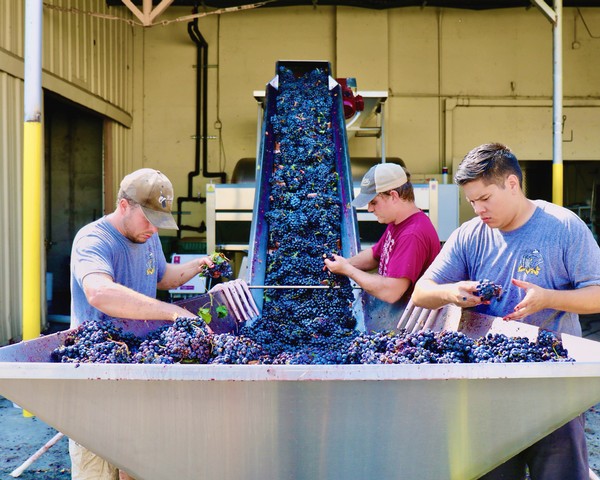
Sorting grapes from an ancient vine Mokelumne River-Lodi harvest.
It's that time of year when we start to talk about the most significant wine trends to expect in 2024.
At the end of this past November, for instance, the Benson Marketing Group came out with 6 Wine Industry Trends You Can't Ignore in 2024. Their first prediction: "The no-alcohol or low-alcohol wine craze continues." The question is, for whom? Wine lovers certainly don't drink non-alcoholic wines, and they never will, unless ordered by their doctors.
The Benson group suggests that alcohol-free beverages are being driven by Millennials and Gen Z consumers seeking "healthier lifestyles and more mindful consumption." Clearly, though, this piece of information is neither here nor there for consumers who currently drink wine, and means nothing to wineries that make their living anticipating what actual wine drinkers want.
in Backbar's October 2023 post entitled Trending in Wine: 2024 Predictions, the #1 prediction is... "Boxed Wine Breaking Boundaries." This prompts the question: Is this something a typical premium winery needs to be concerned about? Boxed wine production may certainly be a growing business for giant wineries with lots of schlock to sell; but it certainly doesn't fit in with the values of the average consumer of premium wine, whose taste in wine is clearly becoming more discerning by the year.
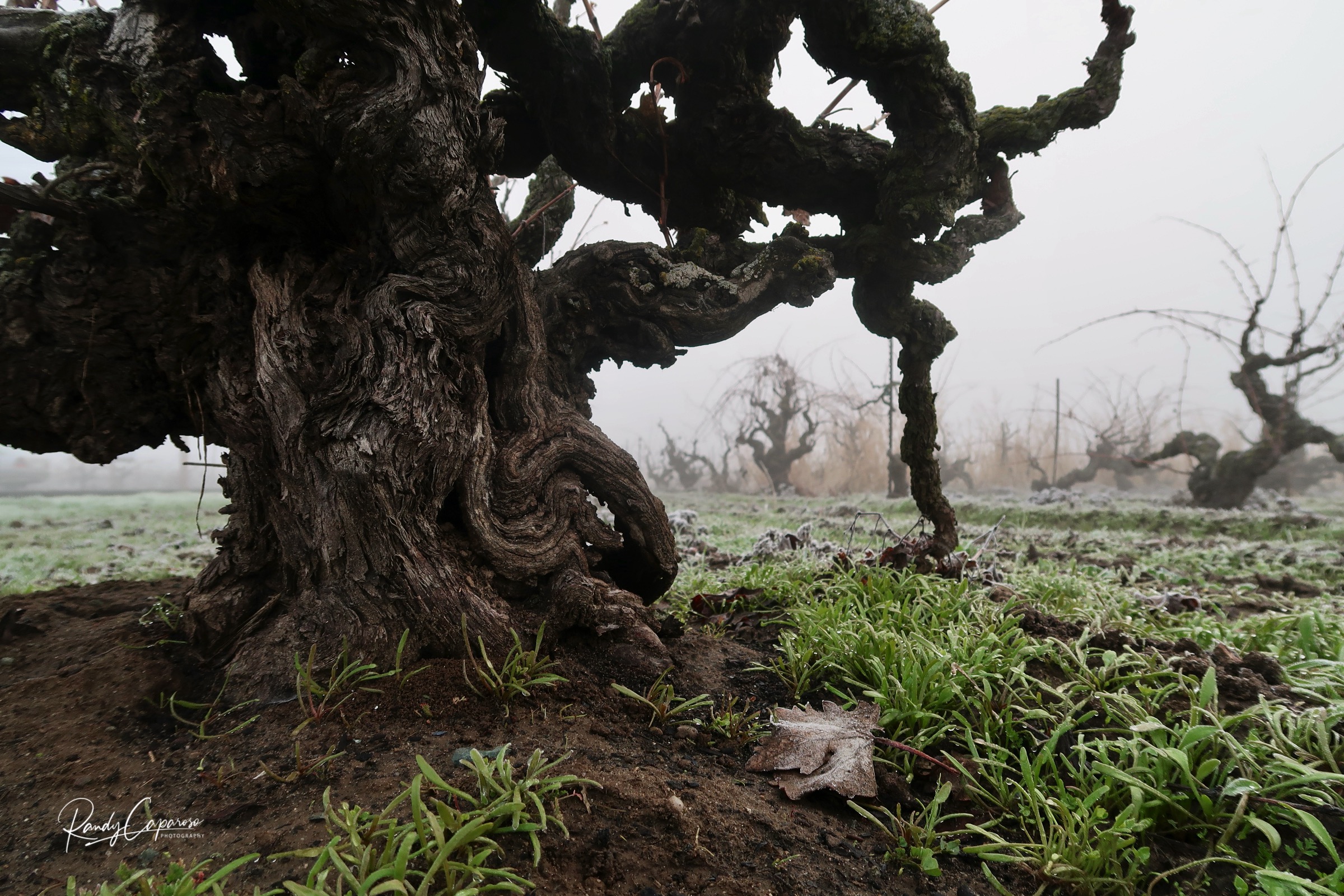
Grapes from ancient vines such as those in Lodi's Kirschenmann Vineyard, planted in 1915, are more highly acclaimed than ever—the very opposite of material suitable for "boxed" wine.
That is to say, people who currently drink Cabernet Sauvignon, Chardonnay, Sauvignon Blanc or even Pinot Grigio will not be "moving on" to schlocky wine, just because it's cheap and comes in a box. What they clearly want, more than ever, is better or more interesting wines.
So what are those wines? Rather than base our report on useless information, we've gone straight to the horse's mouth and queried a few of Lodi's most successful wineries and asked them a simple enough question: What are you producing and selling more of than you were just five, ten or twenty years ago?
Lodi wineries, of course, are undoubtedly a little different from wineries in other West Coast wine regions. While the region grows a ton of the predominant commercial grapes—such as Cabernet Sauvignon, Chardonnay, Merlot, Pinot noir, and Sauvignon blanc—the Lodi wineries established over the past 25 years have never felt compelled to compete exclusively in these varietal categories. Why? Because other regions, such as Napa Valley or Sonoma County, have already established their reputation on those grapes. While much of the industry is driven by convention, differentiation is still tantamount to success.
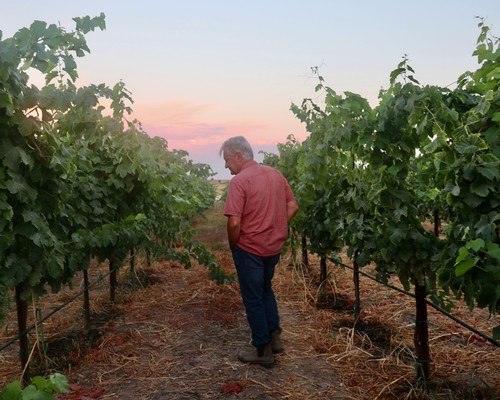
Markus Bokisch in his Miravet Vineyard, planted native Spanish cava grapes, Xarel-lo, Macabeu, and Parellada.
Bokisch Vineyards leading a charge away from mainstream varietals
Bokisch Vineyards, for instance, has never produced a Chardonnay or Cabernet Sauvignon. Instead, when the brand was established in 1998, it started out with three varietals of Spanish origin: Albariño, Tempranillo, and Graciano, reflecting owner/grower Markus Bokisch's Catalonian descent, plus his belief that these grapes are ideally suited to Lodi's Mediterranean terroir.
Since then, Bokisch Vineyards has evolved and shifted its product line according to the needs, or demands, of its customer base. When asked about what he expects to sell more of in 2024, Mr. Bokisch told us:
We have noticed over the past few years that our consumers are bucking the trend compared to national consumption. Instead of focusing on more mainstream varietals, they come to us seeking new, emerging varietals. In the past, these would have been Albariño and Garnacha Blanca [a.k.a., Grenache Blanc]. Today this includes Verdejo and Xarel-lo. I believe this is due, in part, to Lodi’s positioning itself as the place to go for innovation.
We also see a growing understanding amongst our consumers of what beautifully aged “Reserva” and “Gran Reserva” wines are all about. These Tempranillo-based red wines are delicious, and crafted to be consumed upon purchase. Despite their cost [sold in the $60 range], our consumers see great value and are prepared to pay for this quality.
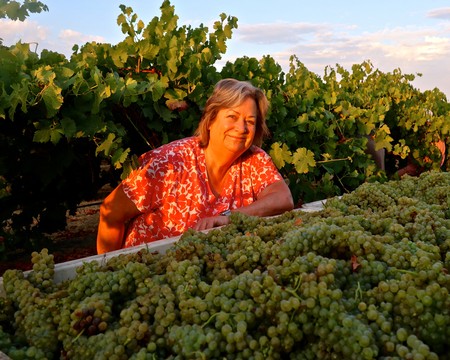
Sue Tipton with one of her 2022 Viognier harvests.
Acquiesce Vineyards was vindicated by the white wine trend but surprised by the surge in rosé and sparklers
Sue Tipton planted the first grapes for her Acquiesce Winery & Vineyard estate only in 2008. Since then, they've become arguably Lodi's most successful, if not unlikely, success story. For two reasons: 1) Tipton was determined to specialize in white wines, and 2) She has specialized in wines that do not see a second in contact with oak in barrels or as sticks, in complete defiance of industry standards.
Tipton often tells the story: "Many well-meaning people in the local wine industry gave me the advice, 'You will never make it unless you sell a Zinfandel, or at least some kind of red wine.'"
Ironically, when Tipton and her husband Rodney originally purchased their east side Lodi property, it was planted to 12 acres of Zinfandel. They eventually pulled out all of the Zinfandel to concentrate strictly on "white Rhône" grapes such as Grenache blanc, Viognier, Roussanne, Piquepoul, Bourboulenc, and Clairette Blanche, and black-skinned grapes (strictly for rosé production) such as Grenache and Cinsaut.
When asked what we should expect from her company in 2024, Ms. Tipton said:
As Acquiesce enters its thirteenth year, we are happy to report that our total sales and club membership have increased every year since opening in January 2012. We began with only 5 grape varieties, growing to 7 varieties in 2015, and now we have 9 varieties planted for a total of 16 acres under vine.
The first grape we planted produces our biggest seller, Grenache Blanc, with the remainder of the grapes we opened with: Picpoul Blanc, Viognier, and Roussanne following right behind in sales.
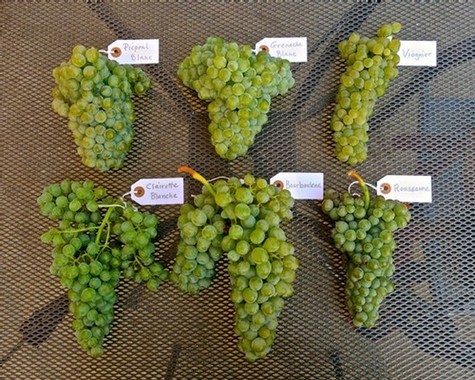
Specialty "white Rhône" grapes grown in Acquiesce Winery & Vineyards: Piquepoul, Grenache blanc, Viognier, Roussanne, Bourboulenc, and Clairette Blanche.
Our Belle Blanc [a white wine blend] remains a customer and wine competition favorite, garnering both Best of Class and Double Gold awards for our 2021 vintage. This wine enjoyed on its own or memorable with food brings the honeyed richness of Roussanne, the stone fruit and floral aromas of Grenache blanc plus the minerality and complexity of Bourboulenc together in an extraordinary blend.
While very conscious, ten years ago, of being a contrarian because of her initial decision not to produce a red wine, Tipton points out the recent Meininger's International report from the International Organisation of Vine and Wine (i.e., OIV, December 12, 2023) entitled OIV Reports that Red Wine Is Losing Its Appeal. An excerpt:
The latest OIV report suggests that today’s wine industry is taking an increasingly different view. Red wine lost a lot of ground in the 20th century and, between 2000-2004, on average, it made up 47.6%—just under half—of the global total. In 2013, nine years after the end of this period, white overtook red and has held its lead ever since. By 2017-2021, red’s share had fallen even further to 42.6%, compared to 49.3% for white. Similarly, rosé—once thought of as a ‘summer drink’ now represents the equivalent of nearly one bottle in every 9-litre case.
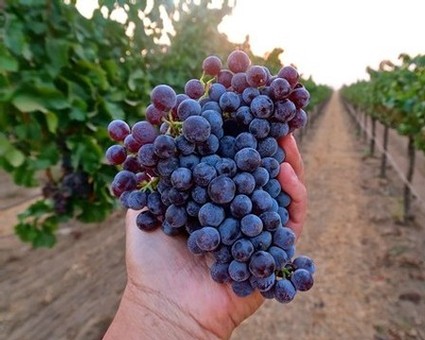
Lodi-grown Grenache is more important than ever for the ever-increasing consumer demand for light and dry style rosé.
While Tipton's commitment as a "white-wine-only" winery has been more than vindicated, what has caught her by some degree of surprise has been the growing consumer demand for dry style rosé as well as bone dry sparkling wines. She tells us:
While white wine is finally getting its due, when I opened the tasting room a dry rosé like I was making was not easily available. The dry rosé tide in the states seemed to change shortly after I planted our Grenache noir in 2008. Due to customer demand, I planted an additional acre in 2015. I remember visiting my son in Seattle and seeing a plethora of imported rosés in a wine shop near his home, but it took a while for me to see them appear locally. Our customers like the fact this Grenache Rosé is an easy drink, fruit-forward, with notes of raspberries, strawberries, Bing cherries, and watermelon. This wine pairs well with all foods and is mineral-driven with a mouth-watering finish.
Likewise, driven by customer requests, I began making our first sparkling wine in 2016, a méthode Champenoise sparkling Grenache Blanc. In addition to Sparkling Grenache Blanc, we have made Sparkling Picpoul Blanc and Sparkling Grenache Rosé with a Sparkling Clairette Blanche to be released summer of 2024. Our customers enjoy the Lodi fruit profiles these varietals offer which is a change from the more traditional Chardonnay or Pinot Noir base wines.
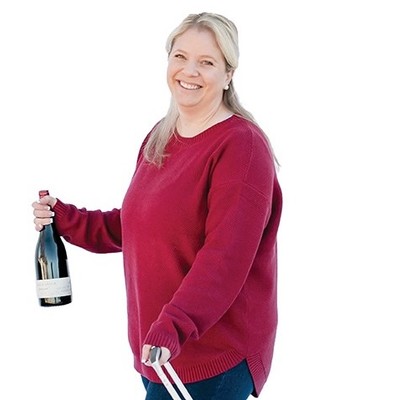
Klinker Brick Winery's Farrah Felten Jolley, opening markets for Lodi-style wines from Hawaii to New York.
Klinker Brick taking Lodi-style marketing nationwide
The Felten family's Klinker Brick Winery started off in 2000 as one of several longtime Lodi farmers who grew tired of selling grapes to big brand companies at fluctuating prices and decided to take matters into their own hands by producing their own wines.
Like other successful family-owned Lodi operations—such as Michael David Winery, Mettler Family Vineyards and LangeTwins Family Winery & Vineyards—Klinker Brick has since grown into a nationally known and distributed brand.
Unlike Acquiesce or Bokisch, however, Klinker Brick started off with a typical Lodi portfolio, with sales driven almost entirely by Zinfandel reds. Over the past ten years, their book has diversified more than a dozen times over.
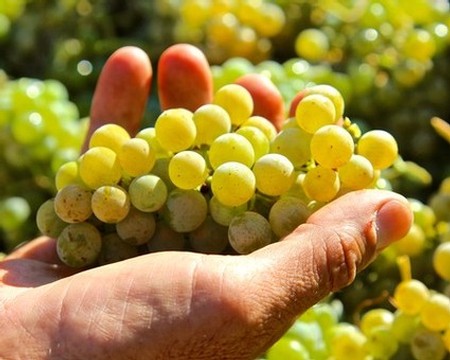
Albariño grapes, which have become a Lodi signature.
According to Klinker Brick VP of Marketing and Sales Farrah Felten Jolley:
Our leading products in terms of growth in 2023 have been our Klinker Brick Cabernet Sauvignon and Albariño. We also saw significant growth in our Marisa Vineyard bottling [a higher tier, vineyard-designate old vine Zinfandel], as well as our 1850 Red [a blend of Cabernet Sauvignon, Petite Sirah and Zinfandel].
While Cabernet has always been "King," Albariño was a little bit shock by how fast we sold out of the 2022 vintage. We released it in January 2023 and we were sold out by July 1st! I think a redesign of our label helped boost sales, but the fact that it represents such an eclectic alternative as a wine, plus sustainability, the price [suggested retail, about $20], and pure quality in the bottle are probably the factors that have driven sales of this wine across the country for us.
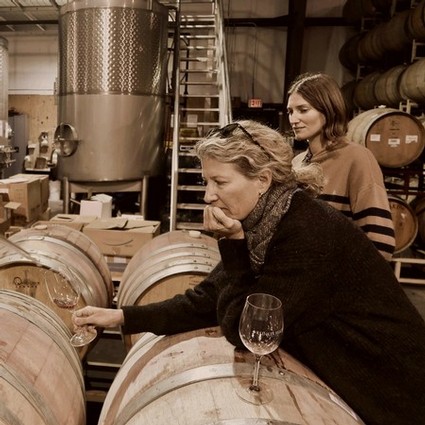
Mother/daughter owners of Lorenza Wine, Melinda Kearney, and Michele Ouellet Benson, working on their Lodi-grown reds.
Lorenza's light, bright, vivid Lodi reds set a new standard for how all red wines are judged
There was a time, not too long ago when all red wines were judged by how big, dark, intense, and "powerful" they came across. Lighter red wines with more delicate structures, zestier acidity, and barely any oak complexity at all were thought to be "nothing" wines. Certainly, nothing to be taken seriously.
In 2023, Melinda Kearney and Michele Ouellet Benson's Lorenza Wine turned that convention on its head, coming out with two Lodi-grown red wines—an ancient vine Cinsaut and an old vine Carignan—that are not just negligible in color, tannin, oak and alcohol (in the latter respect, barely 12% ABV), but more vivid, complex and intriguing than the vast majority of reds made to conform to industry "standards."
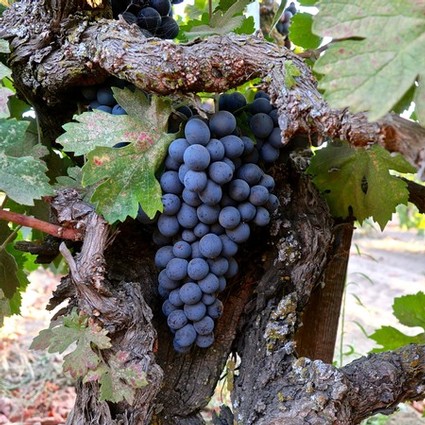
Cinsaut growing on the ancient vine (over 100 years old)—one of the phenomenal aspects of Lodi that is now changing the way all red wines are judged and appreciated.
Is this the future of red wine in the United States? For that matter, for reds all around the world? There are many sommeliers and aficionados of terroir-driven wines (i.e., wines that express a genuine "sense of place" rather than artifice or contrivance) who believe this is the way all red wines always ought to be made—picked earlier when sugars are low and acidity is higher, giving a crafty vintner a higher percentage chance of achieving nuanced delineations rather than power or weight.
This can be done in Lodi precisely because of the appellation's plethora of deep-rooted old vine plantings—far more plentiful than in any other region in the country—that make this style of wine possible. Other brands—such as Haarmeyer Wine Cellars, Little Trouble Wine Co., Maître de Chai, Monte Rio Cellars, and Sandlands—are doing similar things with Lodi grapes. Word is spreading like wildfire. The volume of consumer enthusiasm and critical acclaim, steadily rising as we speak.
Thereby, raising the profile of Lodi as not just another California wine region, but rather one with its own distinct and laudable attributes.